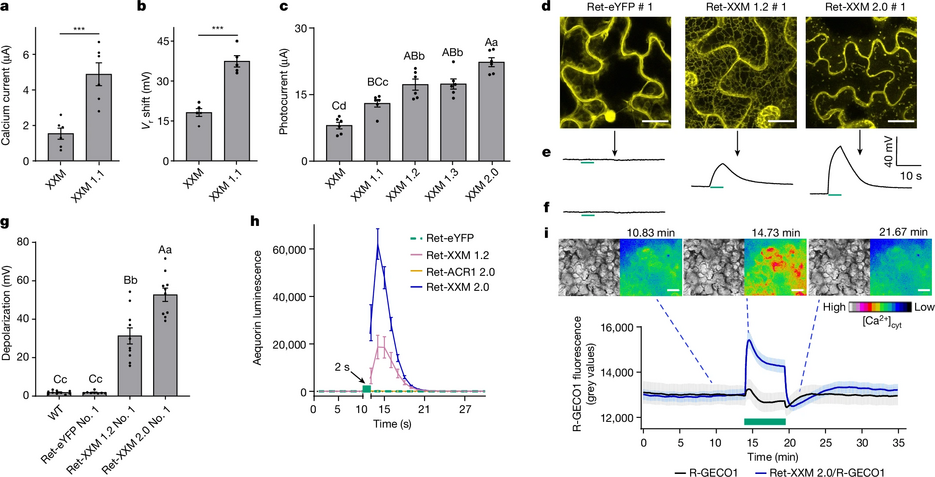Probing plant signal processing optogenetically by two channelrhodopsins
07/30/2024Probing plant signal processing optogenetically by two channelrhodopsins
Meiqi Ding, Yang Zhou, Dirk Becker, Shang Yang, Markus Krischke, Sönke Scherzer, Jing Yu-Strzelczyk, Martin J. Mueller, Rainer Hedrich, Georg Nagel, Shiqiang Gao, Kai R. Konrad (2024)
Nature (2024). https://doi.org/10.1038/s41586-024-07884-1
Early plant responses to different stress situations often encompass cytosolic Ca2+ increases, plasma membrane depolarization and the generation of reactive oxygen species1,2,3. However, the mechanisms by which these signalling elements are translated into defined physiological outcomes are poorly understood. Here, to study the basis for encoding of specificity in plant signal processing, we used light-gated ion channels (channelrhodopsins). We developed a genetically engineered channelrhodopsin variant called XXM 2.0 with high Ca2+ conductance that enabled triggering cytosolic Ca2+ elevations in planta. Plant responses to light-induced Ca2+ influx through XXM 2.0 were studied side by side with effects caused by an anion efflux through the light-gated anion channelrhodopsin ACR1 2.04. Although both tools triggered membrane depolarizations, their activation led to distinct plant stress responses: XXM 2.0-induced Ca2+ signals stimulated production of reactive oxygen species and defence mechanisms; ACR1 2.0-mediated anion efflux triggered drought stress responses. Our findings imply that discrete Ca2+ signals and anion efflux serve as triggers for specific metabolic and transcriptional reprogramming enabling plants to adapt to particular stress situations. Our optogenetics approach unveiled that within plant leaves, distinct physiological responses are triggered by specific ion fluxes, which are accompanied by similar electrical signals.






